


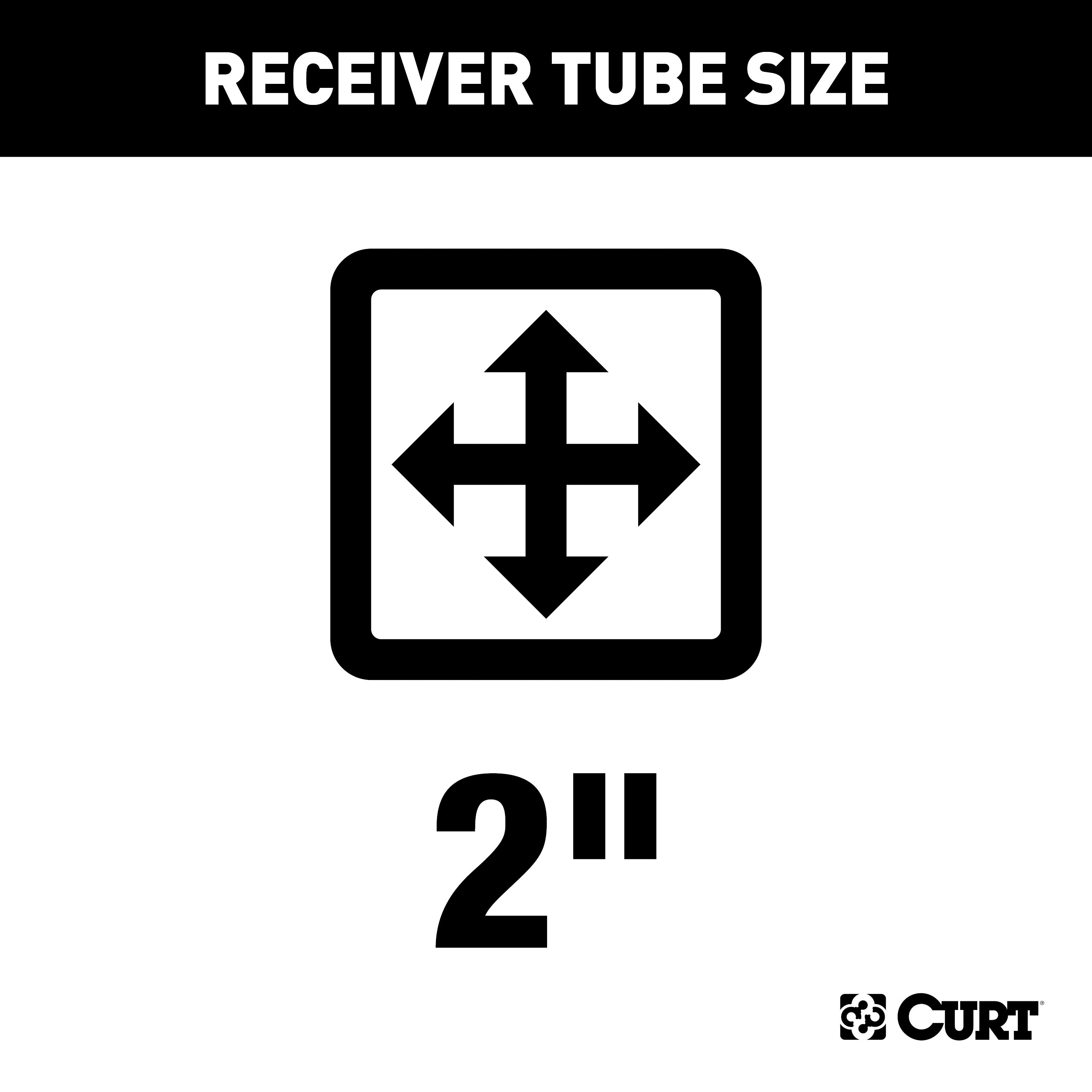
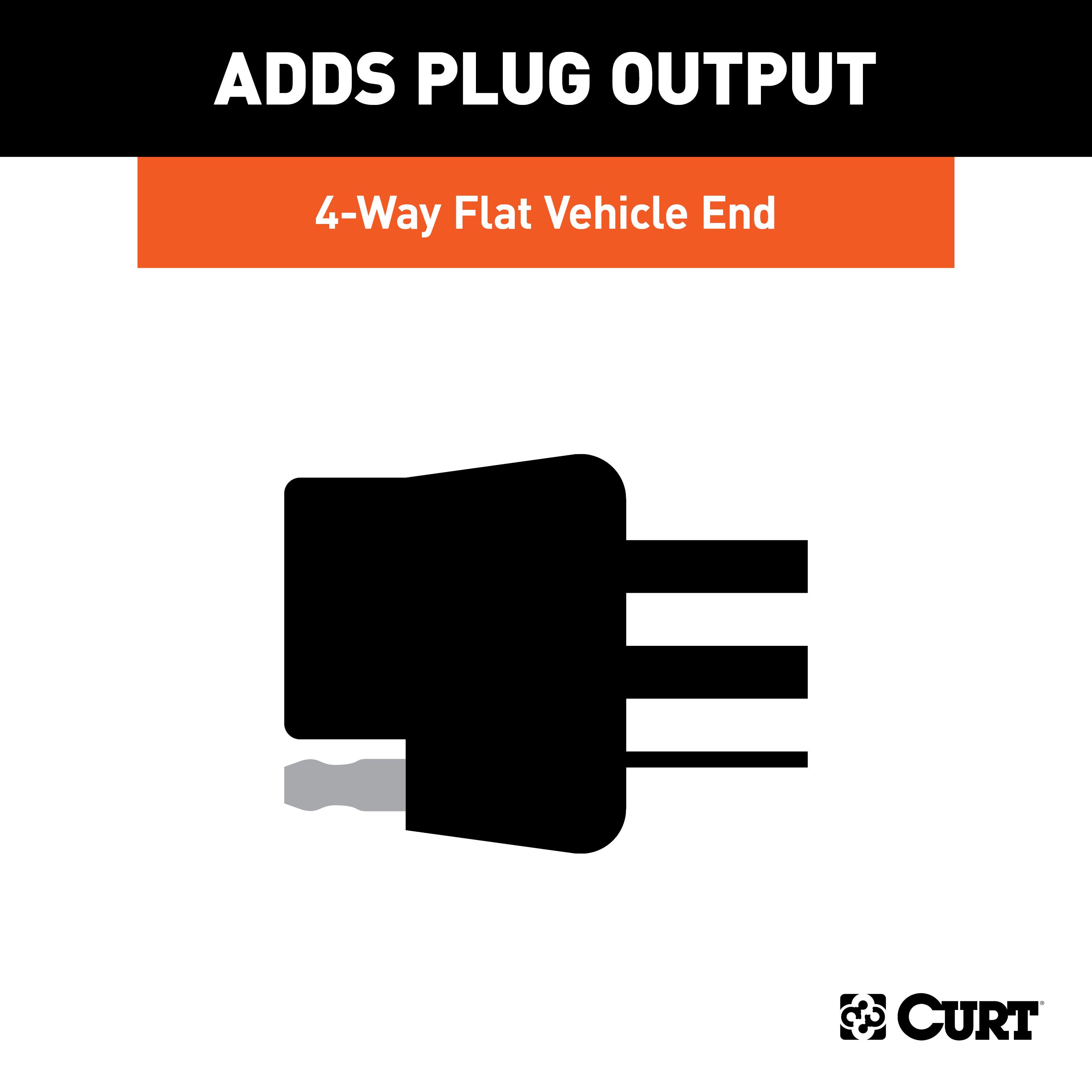
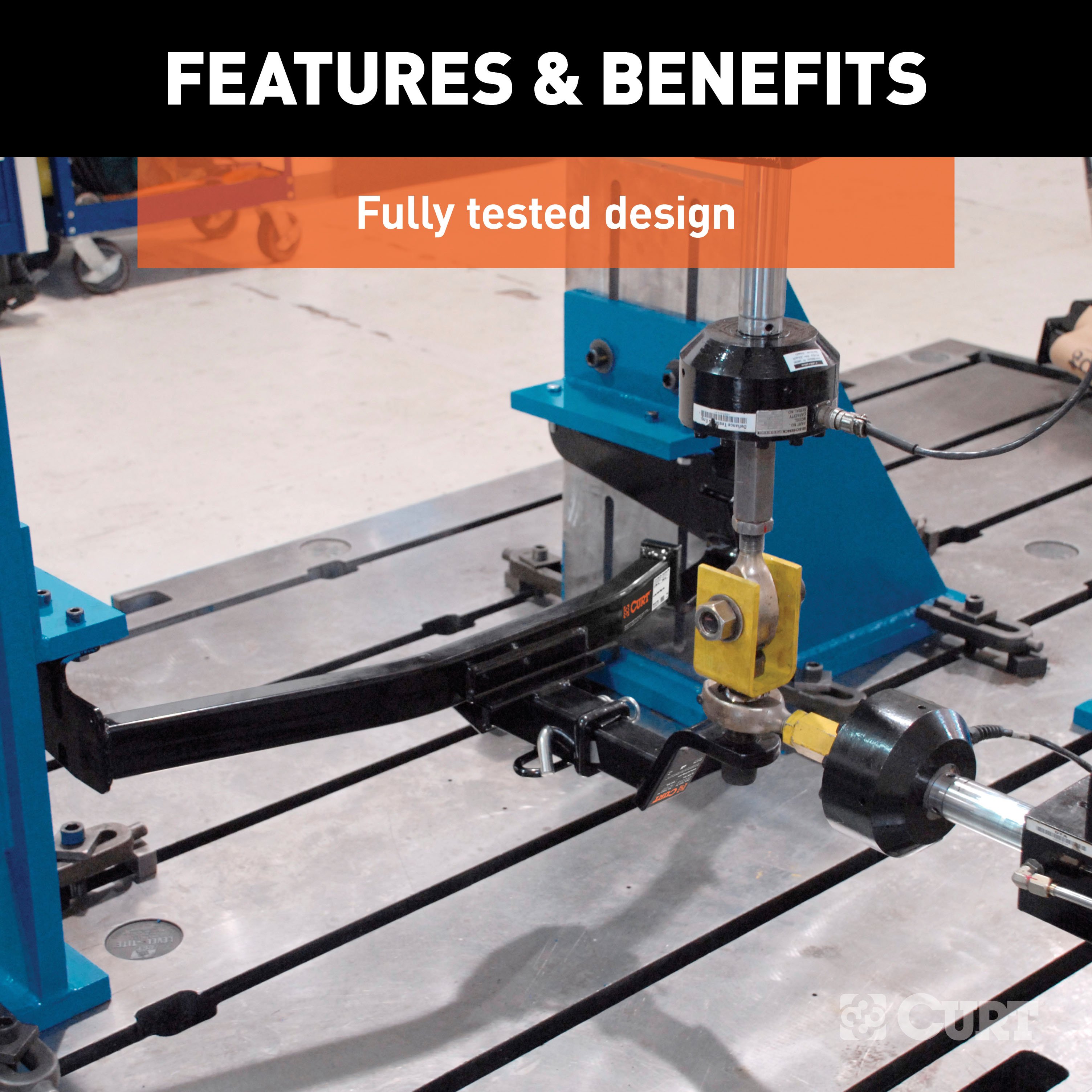

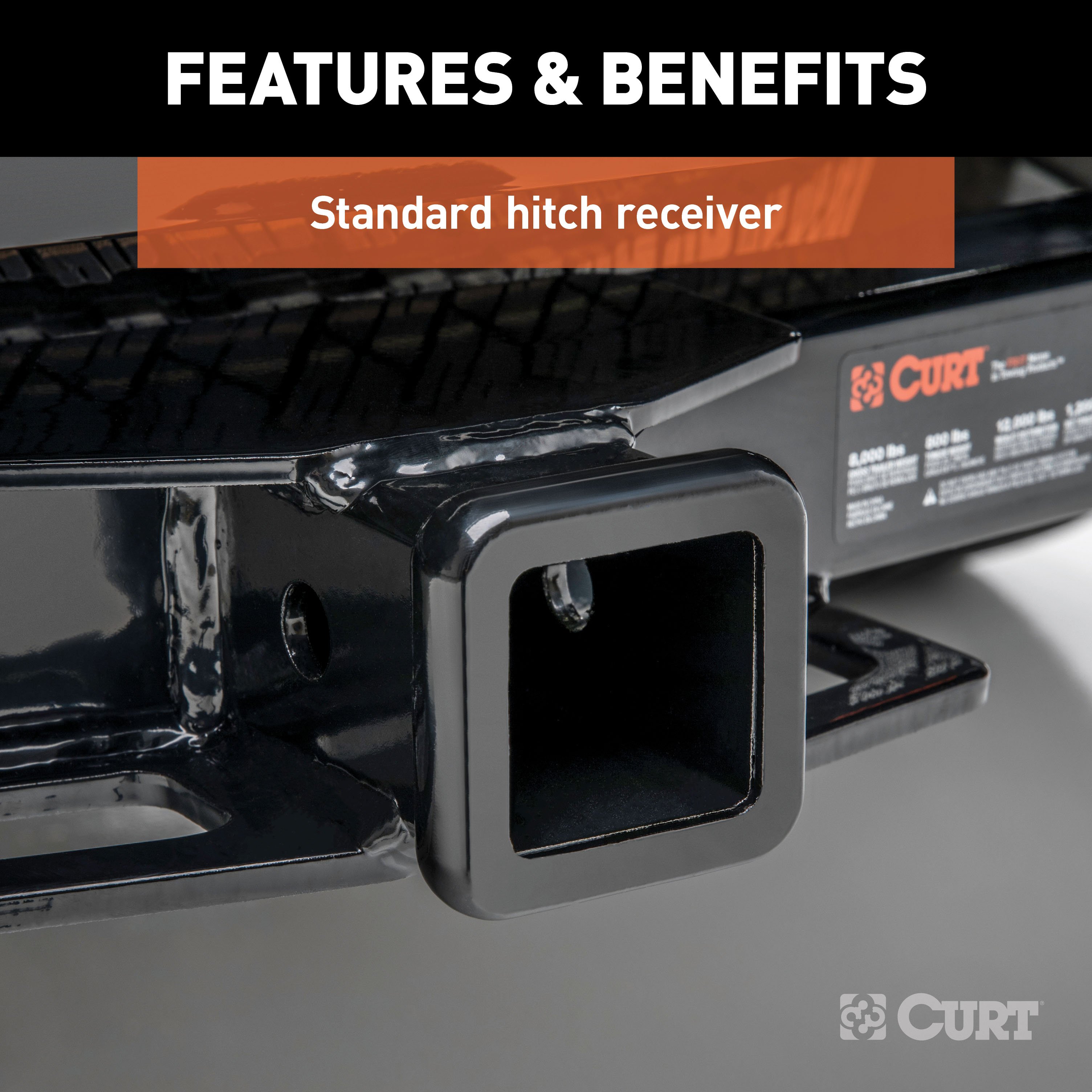
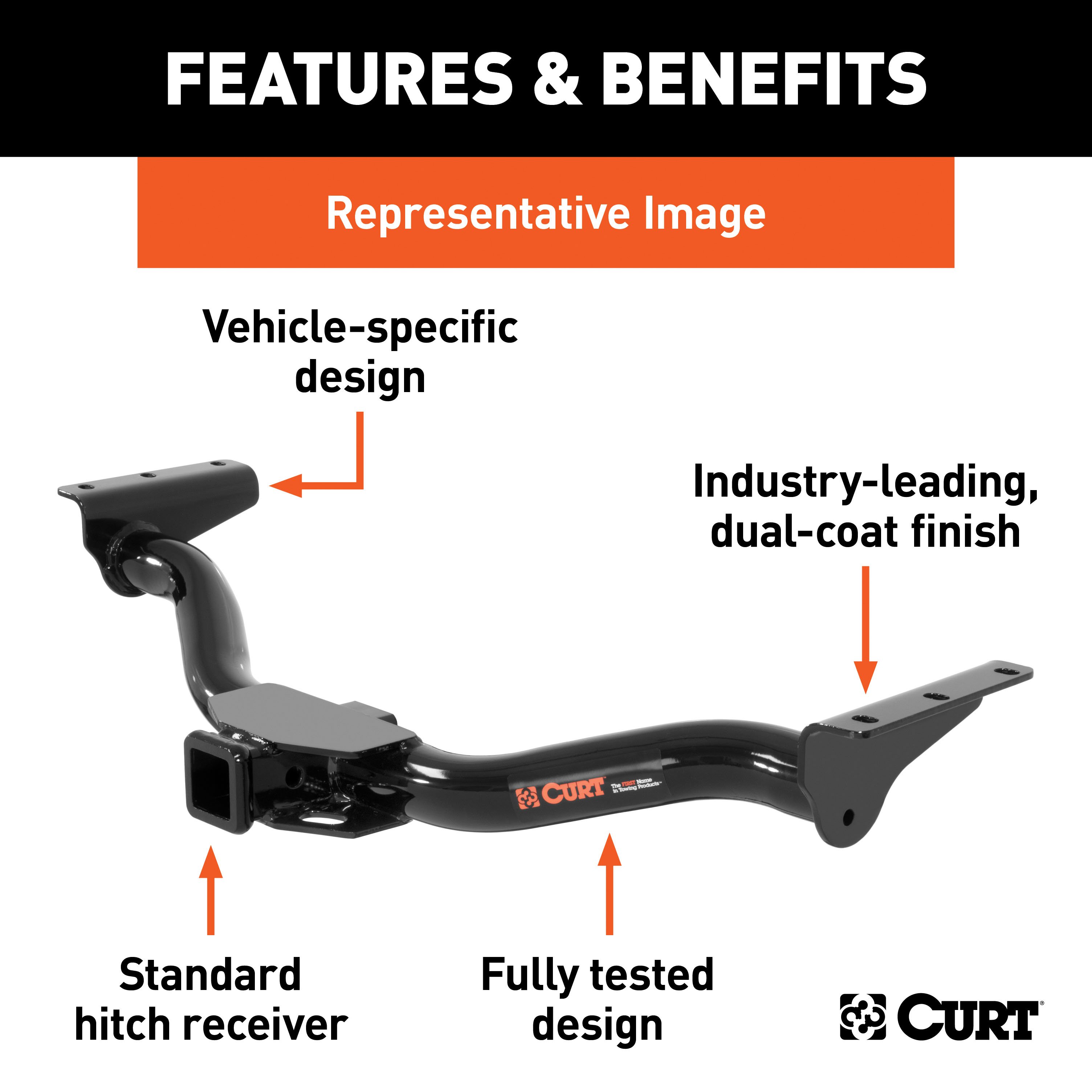
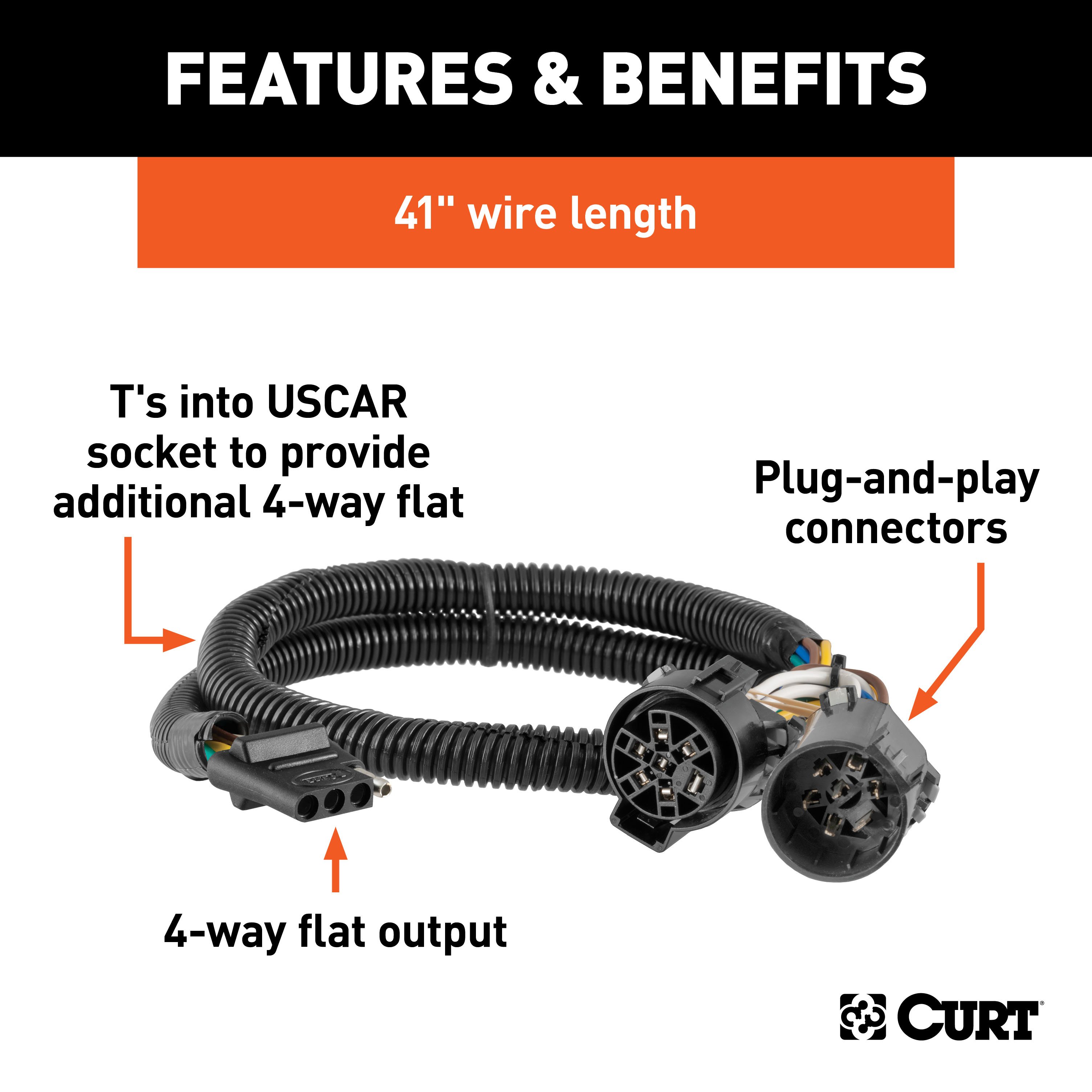
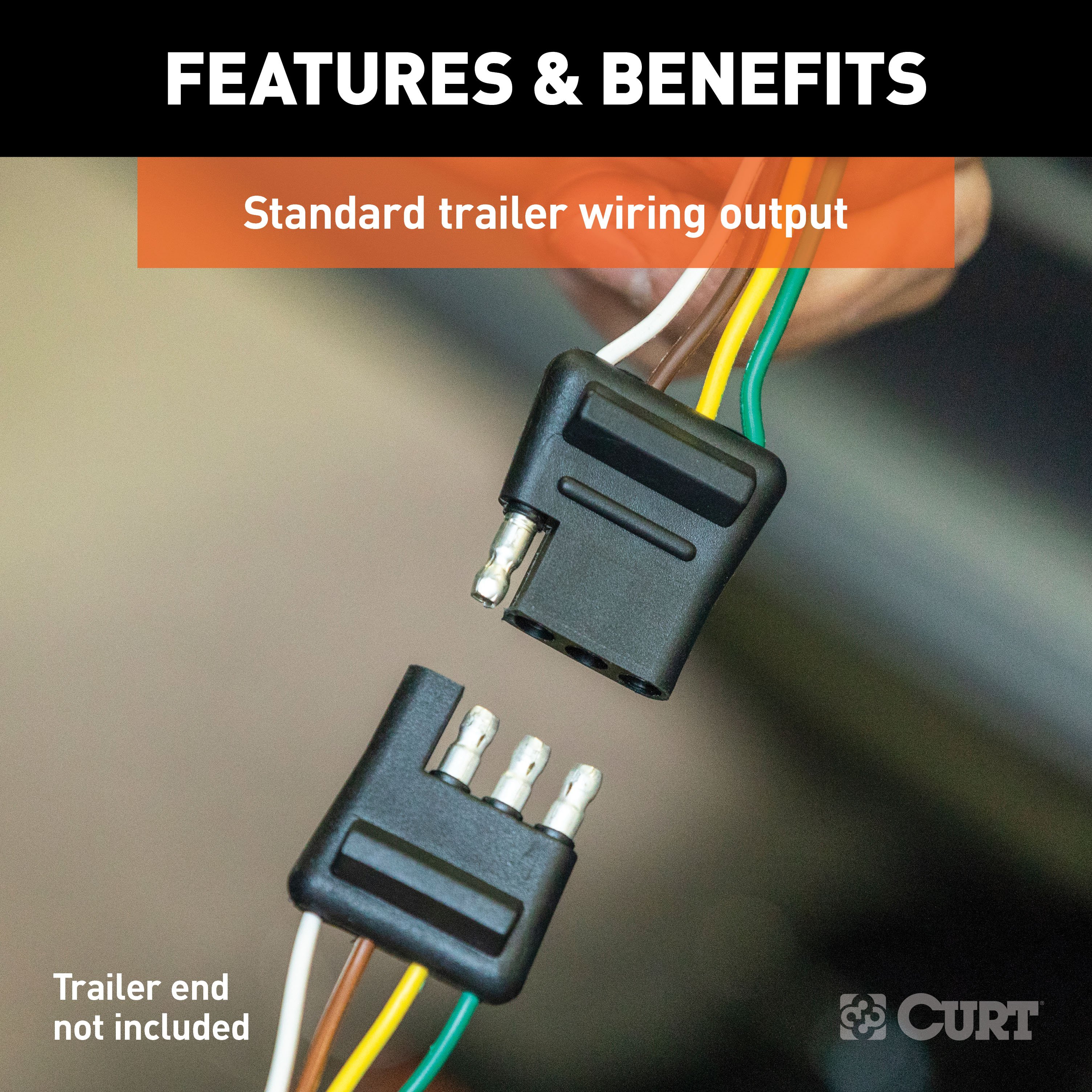
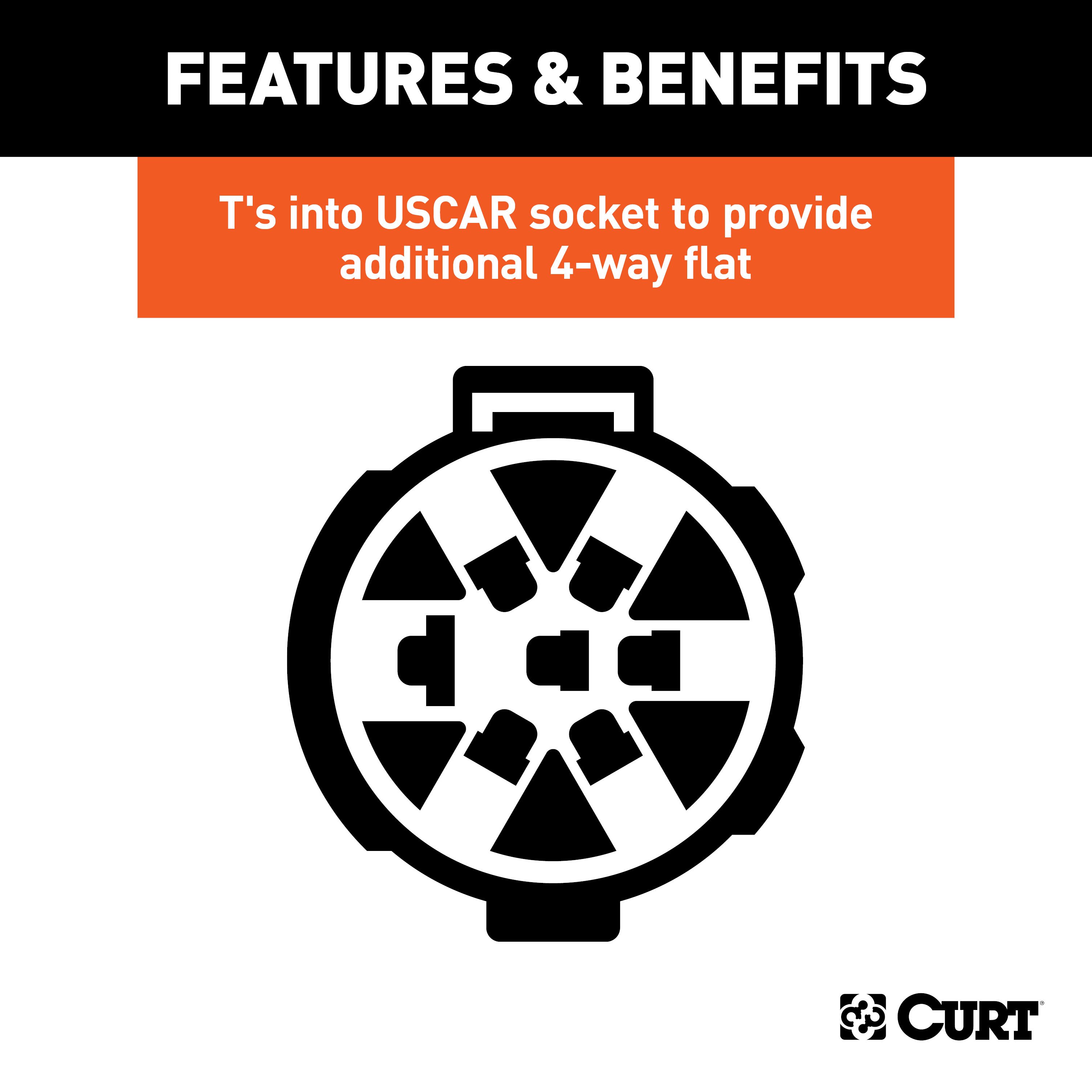
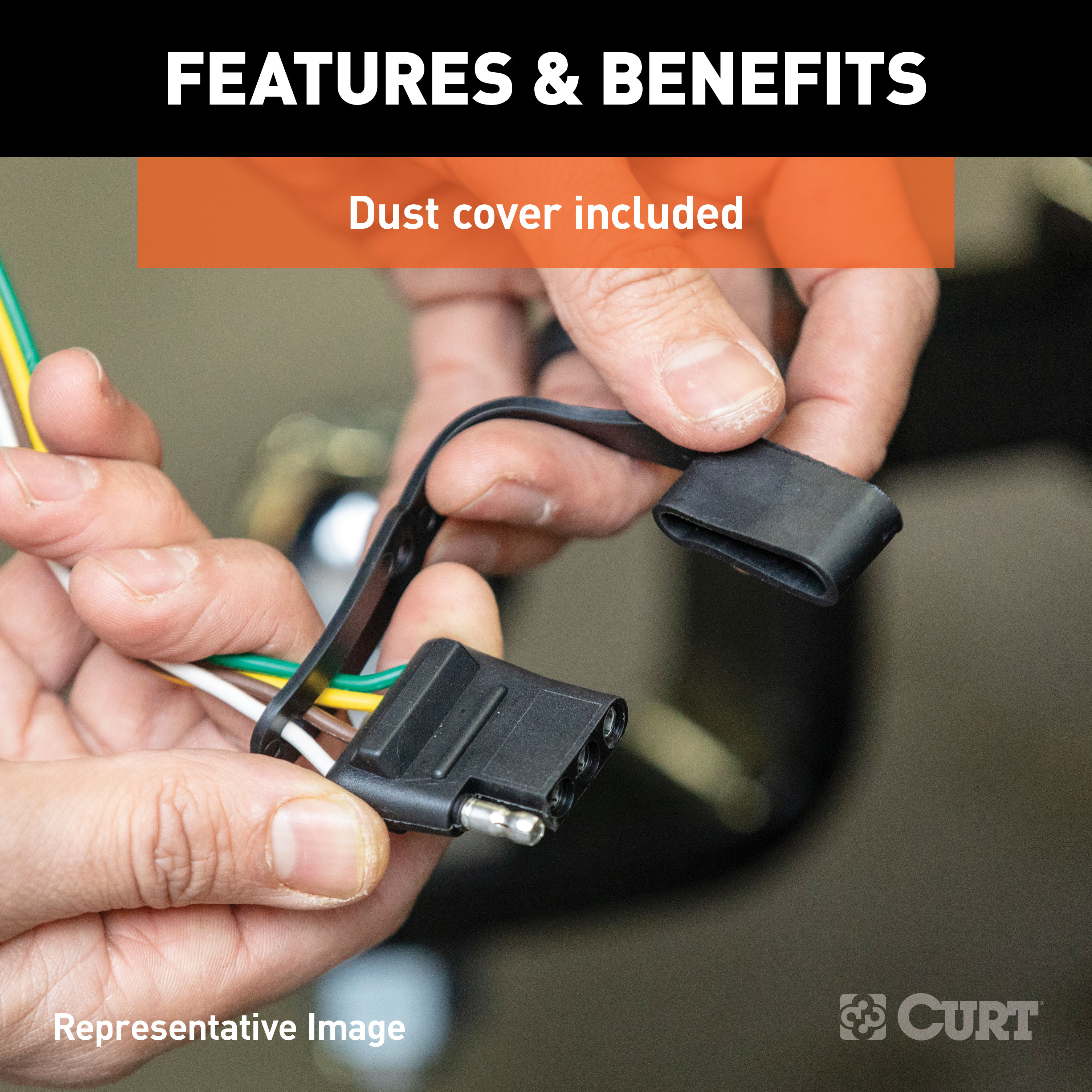
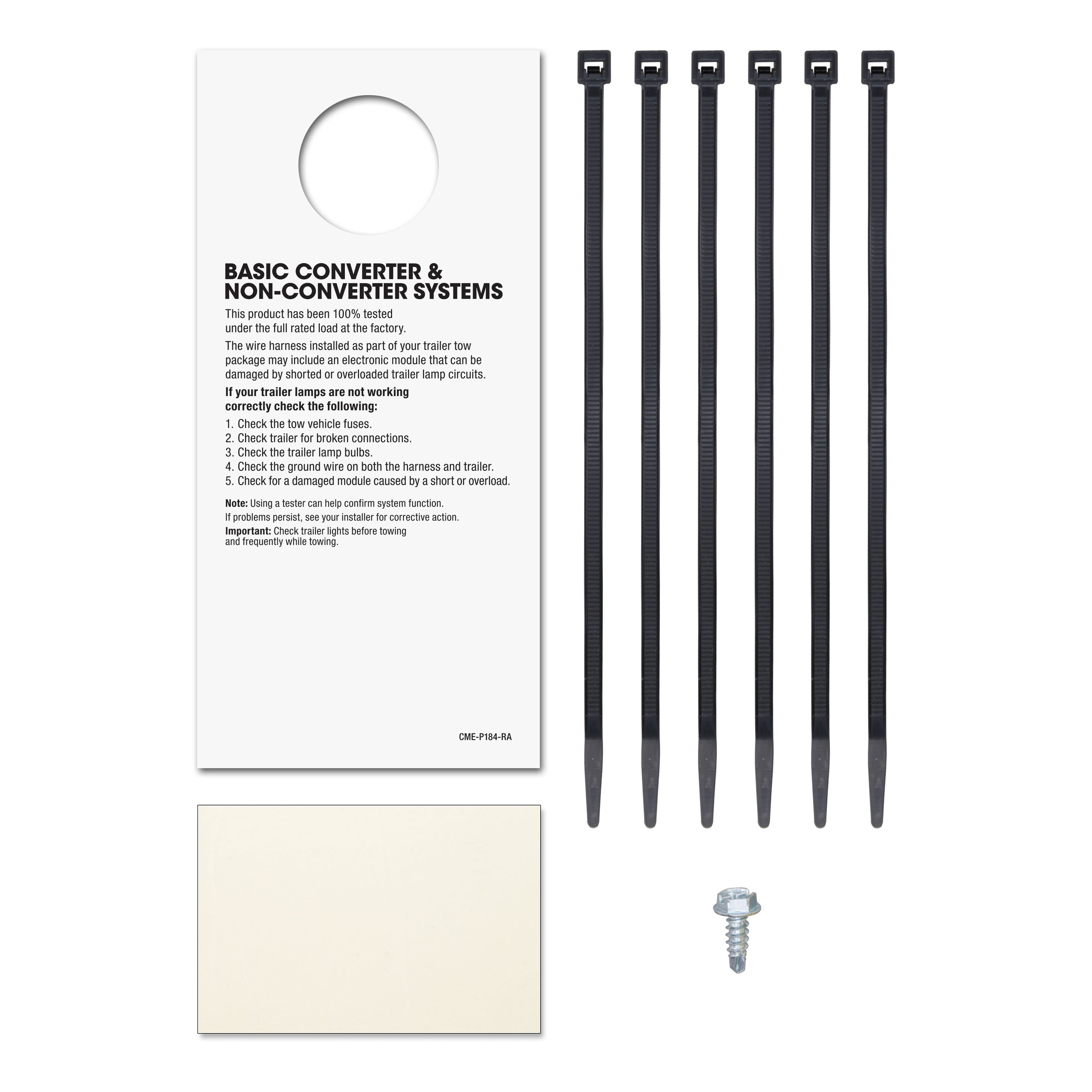
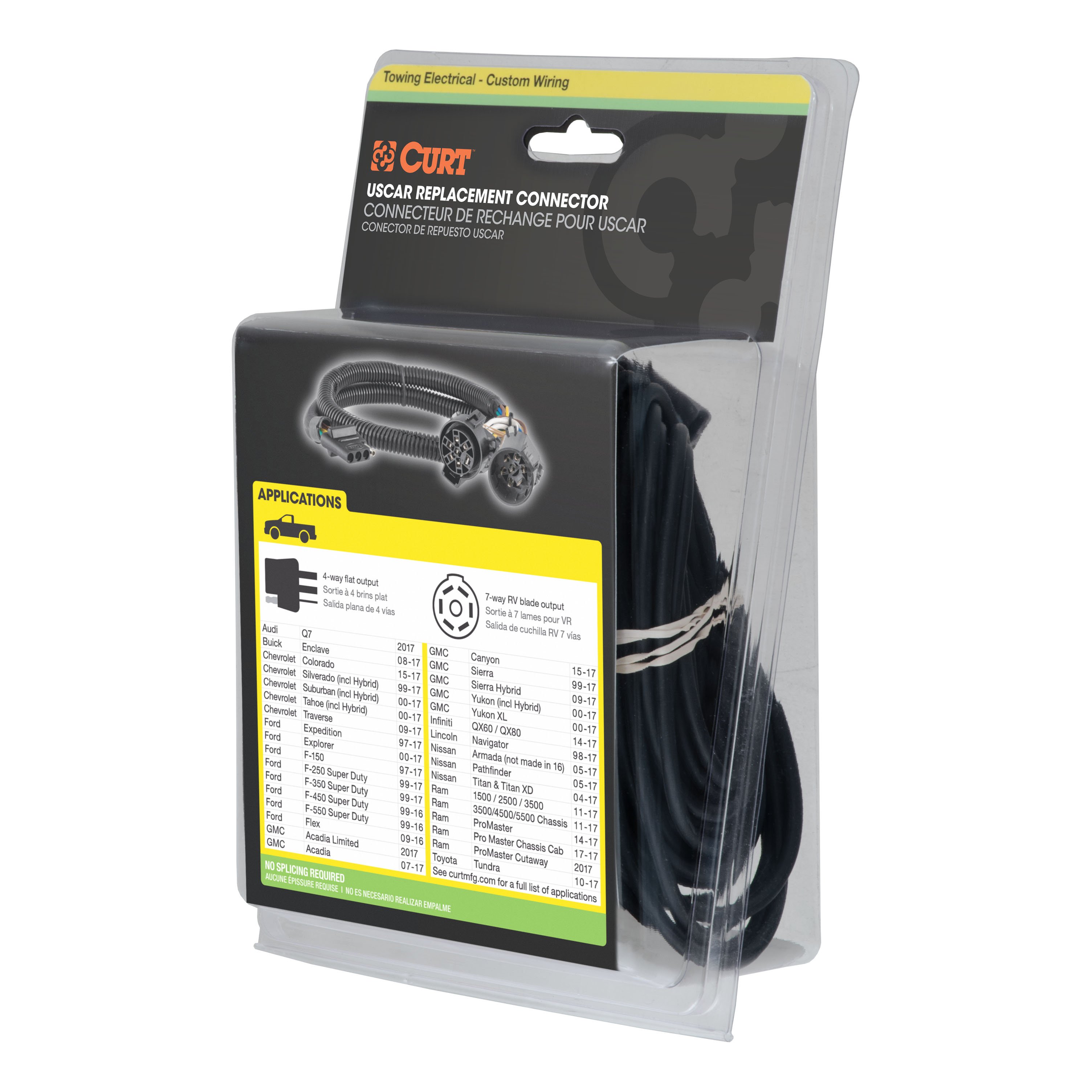
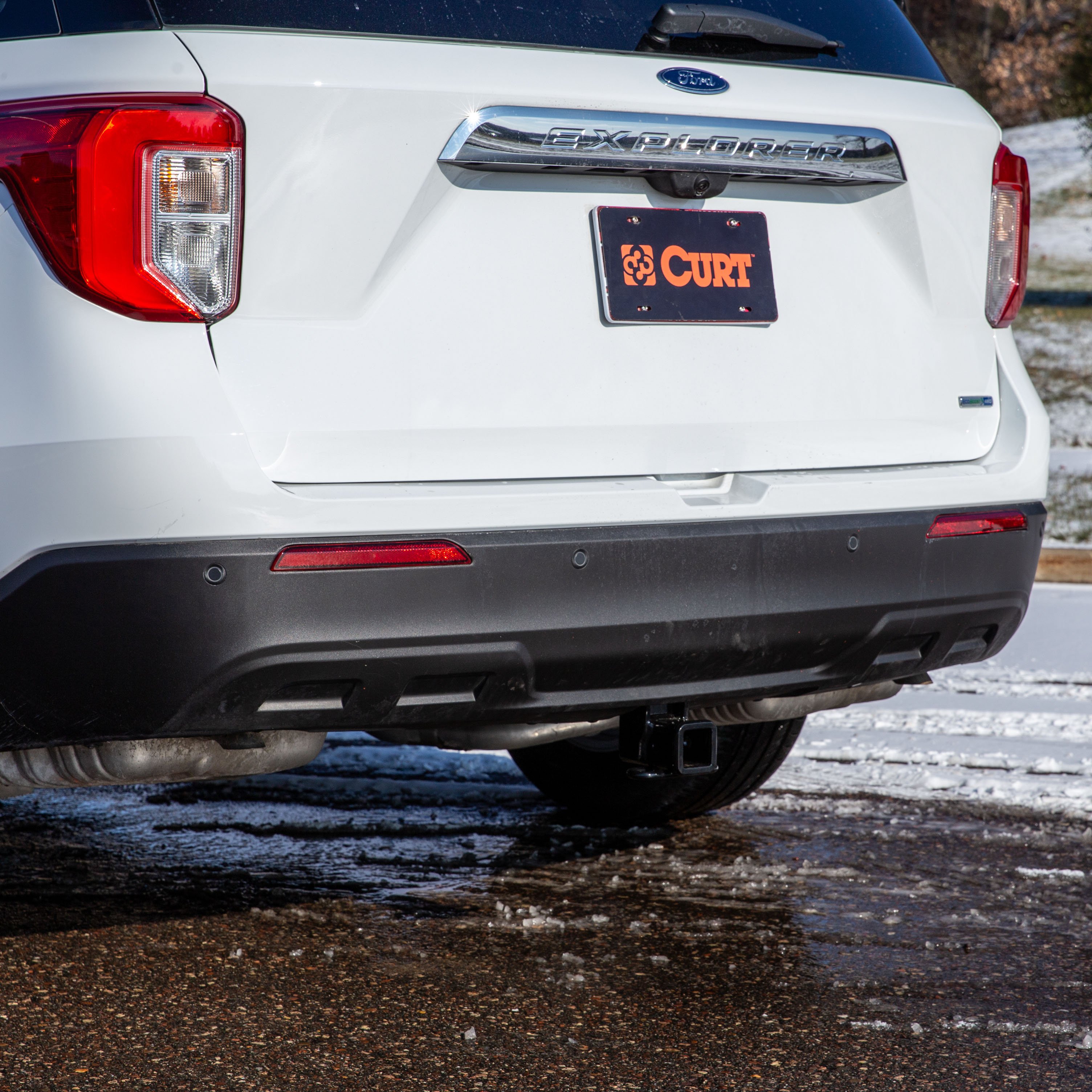
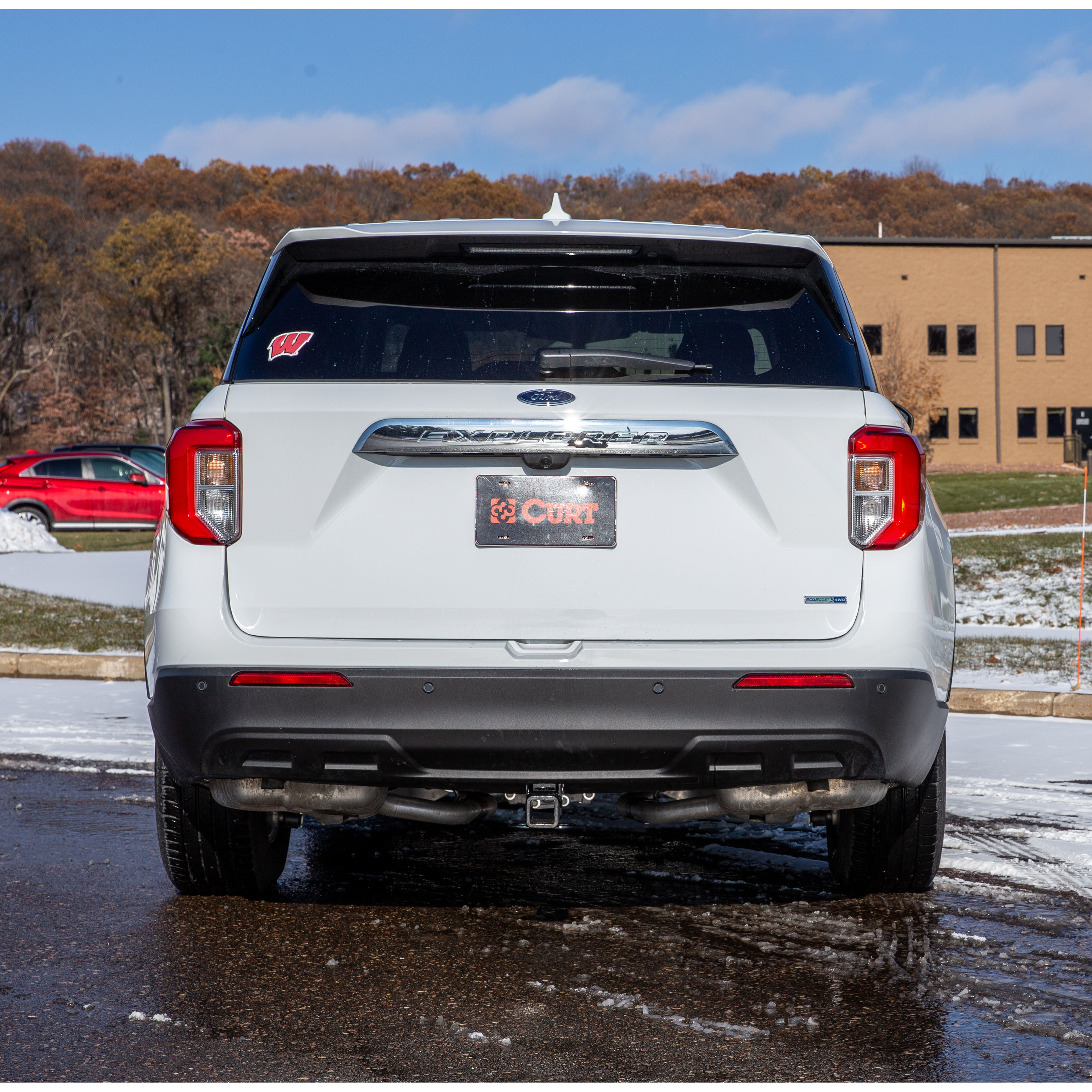
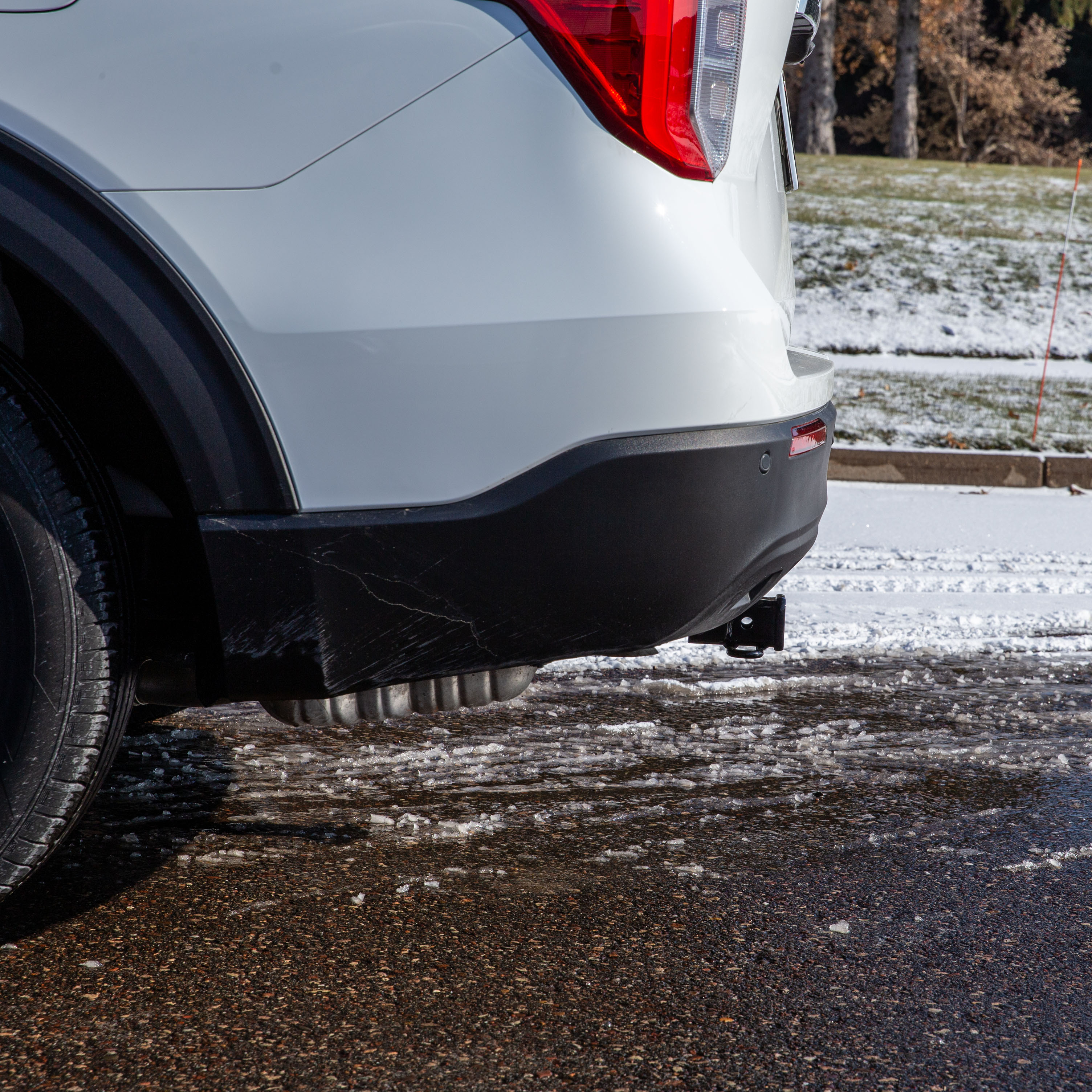




































For 2020-2023 Ford Explorer Trailer Hitch + Wiring 4 Pin Fits Models w/ Existing USCAR 7-way Curt 13438 55384 2 inch Tow Receiver
Model: 13438 55384-CH1261This Trailer Tow Hitch + 4-Flat Fits The Following Vehicles:
2020 - 2023 Ford Explorer w/ Existing USCAR 7-way
This Trailer Tow Hitch + 4-Flat Includes the Following Parts:
- Class 3 Trailer Hitch, 2" Receiver (Easy Bolt-On, No Drilling)
- Replacement OE 4-Way Flat Socket (T's into USCAR)
- Installation instructions, schematics, diagrams, and hardware (if required).
List of Fitment Years:
2020, 2021, 2022, 2023
CURT 13438 Class 3 Trailer Hitch, 2-Inch Receiver
Manufactured by: Curt
Whatever your task at hand -- whether it's launching that boat before daybreak, setting up your camper before the rush or getting a final load to the dump before close -- CURT class 3 trailer hitches offer the strength needed for serious towing They make it easy to hitch up and Bring It, offering a vehicle-specific fit and the weight capacity to handle a variety of trailers Custom class 3 hitches are the most common type of receiver hitch for pickup trucks and SUVs.
Because of their weight range, they are also found on full-size cars, crossovers and minivans Each custom-fit class 3 hitch package is made for vehicle-specific mounting This particular kit fits certain years of the Ford Explorer and Lincoln Aviator (see application info to verify vehicle compatibility).
It provides a weight carrying capacity of 6,000 lbs GTW and 600 lbs TW.
CURT class 3 trailer hitches are typically used to attach and haul utility trailers, boat trailers, campers, snowmobile or ATV haulers and more (NOTE: Never exceed the lowest-rated towing component) Each class 3 hitch has a 2" receiver tube and is tested in accordance with SAE J684 for safety To ensure that CURT class 3 receiver hitches have what it takes for serious trailering, they are designed using a hands-on approach and are constructed with rugged, high-strength steel and precise welding.
We also protect our class 3 hitches in a co-cured finish of liquid A-coat and black powder coat for superior resistance to rust, chipping and UV damage..
Features:
- Rated to 6,000 lbs. gross trailer weight and 600 lbs. tongue weight
- Engineered with a vehicle-specific design for a custom fit
- Concealed main body for OE look and seamless integration with the vehicle
- Tested for safety in accordance with SAE J684
- Precisely welded for superior strength and fit
- Protected by a durable high-gloss black powder coat finish
- Co-cured in a rust-resistant liquid A-coat, inside and out
- Equipped with an open-back receiver for easy cleaning
- Limited lifetime warranty (one-year finish, one-year parts)
- Made in USA (may include imported hardware)
CURT 55384 Replacement Vehicle-Side Custom USCAR 4-Pin Trailer Wiring Harness
Manufactured by: Curt
Stress is the last thing you should feel when towing a trailer -- whether you're hauling your RV to that favorite camping destination, your ATVs up to the hunting grounds or your fishing boat to the new hidden hotspot At CURT, we think your towing equipment should add to the enjoyment of your experience, not detract from it CURT custom wiring connectors are the easiest way to outfit your vehicle with a CURT trailer wiring connection.
They are built with some of the most advanced technology in the industry, and each one is custom-fitted to work with a specific make and model Some automotive manufacturers install a special socket on the vehicle to be used for vehicle-to-trailer wiring Though this special socket is not equipped on every vehicle, a CURT custom wiring connector (also called a T-connector) utilizes the socket for simple, stress-free installation.
Rather than requiring you to cut, splice and solder into your vehicle's wiring system, the custom wiring connector uses a single OEM-compatible plug and instantly provides a standard vehicle-to-trailer wiring connection, typically in the form a 4-way flat All CURT custom wiring connectors are made vehicle-specific for the easiest possible installation and the best fit This particular connector provides a 4-way flat socket while retaining use of the existing OEM socket.
It is designed to be a custom wiring option for a variety of vehicles (see application info to verify fitment with your vehicle) It comes with a dust cover to keep the connector socket clean when not in use..
Features:
- Replacement OE 4-Way Flat Socket (T's into USCAR)
- Plugs into USCAR connection to add 4-way flat and retain use of existing socket
- Simple plug-and-play design eliminates the need for cutting or splicing
- 4-way flat output connects tail lights, brake lights and turn signals
- Dust cover included to keep connector clean when not in use
- Slit loom keeps wires contained and well protected
- Backed by a limited one-year warranty
Hitches Near Me: We operate out of several warehouses across the country, ensuring faster delivery to your location.
$255 99 $375.90 32% OFF
- Best Price on Web Guarantee
- Fastest Shipping
- FREE Shipping
- In Stock

We match lower prices from major authorized retailers for brand-new products in original packaging, provided the item is in stock. The competing seller must be an authorized, professional retail business; offers from
individuals, auctions, peer-to-peer sites, or unauthorized sellers don’t qualify. Used, refurbished, or open-box items are excluded.
Please see our full terms for details.
Verify Fitment
View products that fit your vehicle
Fits 's with the following styles:
View products that fit your vehicle
Fits 's with the following styles:
$375.90 $255 99
 Learn more
Learn more
Questions? Call our Auto Experts at (877) 869-6690
Get it now, pay later
Select installments at checkout to split your purchase into 4 interest-free payments of $ every 2 weeks.
- No fees, ever.
- No impact on your credit score.
Payment options are offered by Affirm and are subject to an eligibility check and might not be available in all states. CA Residents: Loans by Affirm Loan Services, LLC are made or arranged pursuant to a California Finance Lender license.
Installments in partnership with


Each may be shipped from a separate location, and therefore, may arrive at different times
Product Details
- Brand: Curt
- Model: 13438 55384-CH1261
- Includes: Class 3 Trailer Tow Hitch, Replacement OE 4-Way Flat Socket T's into USCAR)
Compatibility Chart
| Year Range | Make | Model | Style |
|---|
This Trailer Tow Hitch + 4-Flat Fits The Following Vehicles:
2020 - 2023 Ford Explorer w/ Existing USCAR 7-way
This Trailer Tow Hitch + 4-Flat Includes the Following Parts:
- Class 3 Trailer Hitch, 2" Receiver (Easy Bolt-On, No Drilling)
- Replacement OE 4-Way Flat Socket (T's into USCAR)
- Installation instructions, schematics, diagrams, and hardware (if required).
List of Fitment Years:
2020, 2021, 2022, 2023
CURT 13438 Class 3 Trailer Hitch, 2-Inch Receiver
Manufactured by: Curt
Whatever your task at hand -- whether it's launching that boat before daybreak, setting up your camper before the rush or getting a final load to the dump before close -- CURT class 3 trailer hitches offer the strength needed for serious towing They make it easy to hitch up and Bring It, offering a vehicle-specific fit and the weight capacity to handle a variety of trailers Custom class 3 hitches are the most common type of receiver hitch for pickup trucks and SUVs.
Because of their weight range, they are also found on full-size cars, crossovers and minivans Each custom-fit class 3 hitch package is made for vehicle-specific mounting This particular kit fits certain years of the Ford Explorer and Lincoln Aviator (see application info to verify vehicle compatibility).
It provides a weight carrying capacity of 6,000 lbs GTW and 600 lbs TW.
CURT class 3 trailer hitches are typically used to attach and haul utility trailers, boat trailers, campers, snowmobile or ATV haulers and more (NOTE: Never exceed the lowest-rated towing component) Each class 3 hitch has a 2" receiver tube and is tested in accordance with SAE J684 for safety To ensure that CURT class 3 receiver hitches have what it takes for serious trailering, they are designed using a hands-on approach and are constructed with rugged, high-strength steel and precise welding.
We also protect our class 3 hitches in a co-cured finish of liquid A-coat and black powder coat for superior resistance to rust, chipping and UV damage..
Features:
- Rated to 6,000 lbs. gross trailer weight and 600 lbs. tongue weight
- Engineered with a vehicle-specific design for a custom fit
- Concealed main body for OE look and seamless integration with the vehicle
- Tested for safety in accordance with SAE J684
- Precisely welded for superior strength and fit
- Protected by a durable high-gloss black powder coat finish
- Co-cured in a rust-resistant liquid A-coat, inside and out
- Equipped with an open-back receiver for easy cleaning
- Limited lifetime warranty (one-year finish, one-year parts)
- Made in USA (may include imported hardware)
CURT 55384 Replacement Vehicle-Side Custom USCAR 4-Pin Trailer Wiring Harness
Manufactured by: Curt
Stress is the last thing you should feel when towing a trailer -- whether you're hauling your RV to that favorite camping destination, your ATVs up to the hunting grounds or your fishing boat to the new hidden hotspot At CURT, we think your towing equipment should add to the enjoyment of your experience, not detract from it CURT custom wiring connectors are the easiest way to outfit your vehicle with a CURT trailer wiring connection.
They are built with some of the most advanced technology in the industry, and each one is custom-fitted to work with a specific make and model Some automotive manufacturers install a special socket on the vehicle to be used for vehicle-to-trailer wiring Though this special socket is not equipped on every vehicle, a CURT custom wiring connector (also called a T-connector) utilizes the socket for simple, stress-free installation.
Rather than requiring you to cut, splice and solder into your vehicle's wiring system, the custom wiring connector uses a single OEM-compatible plug and instantly provides a standard vehicle-to-trailer wiring connection, typically in the form a 4-way flat All CURT custom wiring connectors are made vehicle-specific for the easiest possible installation and the best fit This particular connector provides a 4-way flat socket while retaining use of the existing OEM socket.
It is designed to be a custom wiring option for a variety of vehicles (see application info to verify fitment with your vehicle) It comes with a dust cover to keep the connector socket clean when not in use..
Features:
- Replacement OE 4-Way Flat Socket (T's into USCAR)
- Plugs into USCAR connection to add 4-way flat and retain use of existing socket
- Simple plug-and-play design eliminates the need for cutting or splicing
- 4-way flat output connects tail lights, brake lights and turn signals
- Dust cover included to keep connector clean when not in use
- Slit loom keeps wires contained and well protected
- Backed by a limited one-year warranty
Hitches Near Me: We operate out of several warehouses across the country, ensuring faster delivery to your location.
| Default | |
| Brand | Curt |
| Gross Towing Weight | 6,000 LB |
| Trailer Hitch Receiver Size | 2 Inch |
| Trailer Wiring Output Type | 4-Flat |
| Hitch Class | 3 |
| Trailer Wiring Install Style | Plug&Play |
| Drilling Required | No |
| Tongue Weight Capacity | 600 LB |
| Gross Towing Weight w/ Weight Distribution Kit | Not Capable |
| Maximum Tongue Weight w/ Weight Distribution Kit | Not Capable |
| Hitch Visibility | Concealed |
| Cross-Tube Type | Square Tube |
Ask a Question about For 2020-2023 Ford Explorer Trailer Hitch + Wiring 4 Pin Fits Models w/ Existing USCAR 7-way Curt 13438 55384 2 inch Tow Receiver
Be the first to ask a question.


























































































